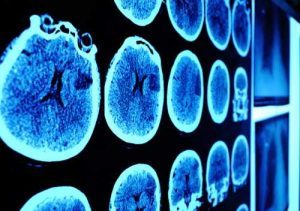
Parkinson’s disease: Stages, symptoms, causes, and natural treatment
For years, little was known about Parkinson’s disease. Without a cause, a cure could not be found. But after extensive research, we’re closer to a potential cure as scientists have now discovered a cause for Parkinson’s disease.
Parkinson’s disease mainly affects movement, as it is a progressive neurological illness. Which means that over time, Parkinson’s disease worsens. Sufferers of Parkinson’s disease will experience tremors in their limbs and even stiffness and lack of movement, which only get worse as time goes by.
This occurs because of damage in the nerve cells within the brain. The damaged neurons—substantia nigra—contain dopamine, a chemical that controls movement. Damaged and lower amounts of dopamine lead to changes in bodily movement, even limiting the ability to move. Continue reading…
A new study uncovered that welders can develop and experience Parkinson’s disease symptoms that worsen over time with greater exposure to manganese from welding fumes.
Study author Brad A. Racette explained, “These welders are developing parkinsonian symptoms even though their exposure to manganese is below the current regulatory limits. This study suggests that we need more stringent workplace monitoring of manganese exposure, greater use of protective equipment, and monitoring and systematic assessment of workers to prevent this disabling disease.”
Welding has long been linked to Parkinsonism, which is a term to describe movement problems similar to those in Parkinson’s disease. Continue reading…
Parkinson’s disease is a long-term degenerative disorder of the central nervous system. While some cases can be attributed to genetic inheritance or environmental factors, the majority of cases are considered idiopathic—having no specific cause. However, chemists from Konstanz sought out to develop a complex series of experiments that examined the effects of changing a single amino acid in a protein involved in the manifestation of Parkinson’s disease with great success.
“We hope that the finding of this selectively defective membrane binding will help us to understand how Parkinson’s develops on a molecular level. Ultimately, this will facilitate the devising of therapeutic strategies,” outlines Julia Cattani, a doctoral student who played a major role in the success of the research. Continue reading…
Patients living with Parkinson’s disease may experience tremors, slower movement, and issues with balance that can inhibit their ability to exercise and keep their body strong. This has proven to be an issue, as without regular exercise that includes some measure of strength training, these symptoms can worsen as muscle mass decreases, making moving progressively slower and more difficult.
This slowing of movement is referred to as bradykinesia and is what causes many Parkinson’s patients to have a slow, shuffling gait. Regular exercise can help improve the movement of those with Parkinson’s, as well as their balance and gait. Continue reading…
A new study has confirmed that any type of exercise is beneficial for Parkinson’s disease patients. It may be difficult for Parkinson’s disease patients to exercise, but many experts in the field suggest that exercise can have long-term benefits for them.
Parkinson’s disease is characterized by a loss of dopamine, which can contribute to a loss of movement control.
The review assessed the outcomes in over 100 studies conducted over the past 30 years looking at the impact of exercise on Parkinson’s disease. The results showed clear benefits of exercise on Parkinson’s, specifically for strength, mobility, flexibility, and balance. Continue reading…